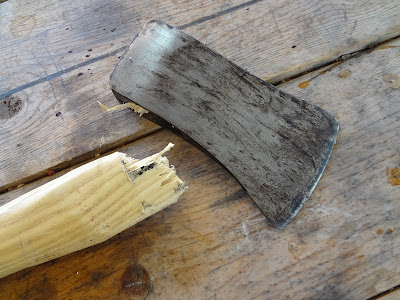Years ago three gentlemen were discussing a bank note that
was due that very morning. One of the men
said he had not slept the night before worrying about the note. And one of the two others said if the note
was not paid then the business might fail.
The three men faced a serious financial dilemma and that is
irrefutable. But perhaps what happened
next did more to alter the course the three men seemed unable to correct than
anything else that occurred later that day.
You see, the third man heard music coming from directly above him. He glanced up and saw a small gray bird with
a yellow front sitting on a utility line.
The bird was chirping and whistling and to the man standing on the
sidewalk below it came like a sweet heavenly melody. “Isn’t that beautiful?” he said.
Now the two other men were still discussing their impending
financial ruin and at first neither one heard what the third man had just
said. So the man listening to the bird
repeated, “Isn’t that beautiful?” Finally,
the other two men quieted and one of them asked, “What are you talking about?”
All the while the small gray bird with the yellow front kept whistling
and chirping. It occurred to the man who
heard the song that even as they fretted about the looming crisis the bird sang
oblivious to their concerns. The world
had not changed. The morning was
beautiful with an endless blue sky and gentle breeze wafting in from the northeast. Will everything come to an end if we cannot
pay this note today, the man wondered. Will
we be whisked away to die in some sort of dungeon? The answer, of course, was no. And though this man was not what might be
termed a man of faith nor was he in any great sense a religious person, he was
a man guided by spiritual principals. He
saw the beauty of life and understood that all we can know is the moment in
which we are living. Yesterday is
gone. Tomorrow is a mystery. We, all of us, only know each moment as it
occurs.
The two other men looked briefly at the bird perched on the
utility line but did not seem impressed by what they saw or heard. So they went right back to agonizing about
the bank note that was due. But for the
third man things had changed though perhaps he had always been different in the
way he saw life. He was still a young
fellow and the other two were a bit older.
In the intervening years it is doubtful that either of them ever stopped
to listen to any singing bird nor is it likely they spent much time in the
woods enjoying nature. But the third man
did not go that route. He said, “You
fellows go back into the office. I’m
going to see the banker. I’ll take care
of everything.” And he did. He calmly renegotiated the note and the bill was
paid in a matter of weeks and the business continued successfully.
But the man never forgot the lesson he learned that day. In times of crisis he has made a special
effort to focus on the immediate: A quiet walk in the woods or along a park
trail noticing each leaf on a tree or butterfly skimming the surface of a
pond. He listens to the birds singing and
looks off at the clouds making note of how they change in the wind. The idea is to focus intensely on what exists
at that very moment. Forget what might
lie ahead or what went before. There is
only now. Revel in that moment for in
truth that is all you can ever know. If
nothing else then look out your window and when you see something—perhaps just
an ant crawling along the bark of a tree—then tell yourself, “I alone am seeing
this ant.” You are now in that moment.
More than anything that is what nature brings you. It allows you to live in the present. Just sit still and remain quiet. Listen and watch and above all do not
move. It’s not about what you chop or
carve or build, and it’s especially not about what you buy. If you insist on making a “wish list” then
wish for quiet and a chance to sit in the deep woods listening as you watch the
things around you. I realize that isn’t
always easy. Sometimes the stresses in
our lives become overwhelming. But I
hope that all of you will find a way to see things through. Who knows, you might even spot that same gray bird with the yellow front.








